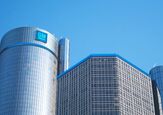First The Tsunami, Now The Floods. Japanese Companies Get No Breaks

Japanese carmakers are driven out of the country by a rising yen and an urge to diversify their production after the catastrophic March 11 tsunami. A favorite destination is Thailand. Due to free trade agreements with many nations, Thailand increasingly morphs from the Land of Smiles to a South East Asian production and export hub. Now, most car production in Thailand is stopped – again because of killer floods.
Toyota has three plants in Thailand. Toyota says the plants were not affected by the floods. Again, it is the supply chain that brings production to a halt. Plant closures, originally planned through October 15, now have been extended through October 22. “A decision on production at the plants from October 24 onwards will be based on a close observation of the situation as it develops,” Toyota says in a statement.
Honda has two plants in Thailand. The car factory in Rojana Industrial Park is reported as flooded and inaccessible. Honda’s plant for motorcycles and generators and is not directly affected by the floods. However, both plants will remain closed until further notice. “It has not yet been determined as of the date of this Notice when production will be able to recommence at each of the above two production bases,” Honda wrote in a letter to shareholders. “The Company plans to determine about future operations upon monitoring the situation.”
The Nikkei [sub] reports that Isuzu will extend the shutdown of a factory on the outskirts of Bangkok to next Friday. Nissan planned to keep a plant outside the capital closed through next Wednesday.
On Sunday, The Nikkei [sub] reported that Japanese carmakers manufacturing in Thailand are likely to suspend production for a month or more. Again, it is parts makers that took the brunt o the catastrophe – no parts, no cars. Toyota has asked major parts makers in Japan to increase output of parts for cars being built in Thailand.

Bertel Schmitt comes back to journalism after taking a 35 year break in advertising and marketing. He ran and owned advertising agencies in Duesseldorf, Germany, and New York City. Volkswagen A.G. was Bertel's most important corporate account. Schmitt's advertising and marketing career touched many corners of the industry with a special focus on automotive products and services. Since 2004, he lives in Japan and China with his wife <a href="http://www.tomokoandbertel.com"> Tomoko </a>. Bertel Schmitt is a founding board member of the <a href="http://www.offshoresuperseries.com"> Offshore Super Series </a>, an American offshore powerboat racing organization. He is co-owner of the racing team Typhoon.
More by Bertel Schmitt
Latest Car Reviews
Read moreLatest Product Reviews
Read moreRecent Comments
- Scott Automatic braking scares me. I have had the Object Ahead!!! warning-light come on because the pavement ahead changed color. (ie concrete to asphalt or such) If the car had auto-braking it would have been four wheel lockup (except for the antilock)
- Cardave5150 Wow, that front end is an absolute mess in Wimbledon White.
- Scott Sub-headline, "FORD finds Another Way to Tell Me How Old I Am".60th Anniversary,,,, 60th!!
- Ajla I'll admit I am psychologically attached to having an engine. That's obviously a major hurdle for me when it comes to EVs. Beyond cost, range, charging and other things folks have mentioned.
- Lorenzo If Stellantis had any cojones, they'd have re-named it "Adolfo" after the Italian Business Minister. Let him argue that's an Italian name.

































Comments
Join the conversation
Well, why do they put their factory in low lying, historically prone to flood area then? Flood is generally historic, if an area is flooded, chances are it has experienced flooding in the past, and you can check the record to find out. Same here in Indonesia, the Toyota and Daihatsu plant is located in an area historically prone to flooding, being basically a former low lying marshes. They got hit in the big Jakarta flooding a few years ago too.
If you dissociate the image from what it actually means, that is an interesting photo. Have to agree w/ MrWhopee - why establish a plant in a floodplain? Just visited a website today with a slideshow of cities near volcanos - Jogykarta, Naples, Seattle/Tacoma and others - its not just poor business disaster planning. It seems if a natural disaster hasn't occurred in a certain period, its as if it never happened and therefore couldn't possibly happen.